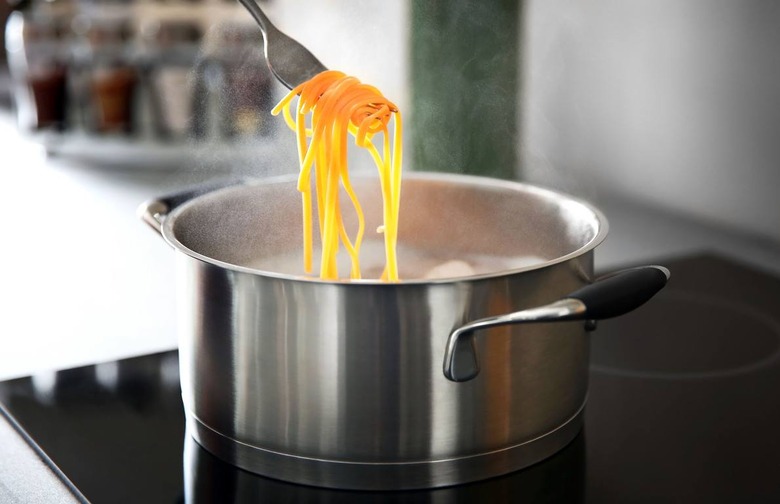It's Not Just What You Eat, It's How You Cook It: 9 Kitchen Techniques To Aid Weight Loss Slideshow
Although they may not be as aesthetically pleasing as a finely diced brunoise of peppers, onions, and potatoes, bigger cuts of vegetables have less surface area to pick up oil. If you really want to cut down on fat intake, use a mister to lightly coat your ingredients with oil before you cook them.
Don’t Overcook Pasta
Ever notice that overcooked pasta ends up texture-less and mushy? As the pasta cooks, the starch molecules holding the noodles together begin to breakdown. This reaction depletes the fiber content of the noodle, effectively turning it into a refined carbohydrate that will quickly break down into sugar in your body. If you cook the noodles until just before they're al dente, in order to preserve as much fiber as possible, they'll be more filling, so you'll eat less. (Be aware that pasta cooking times depend on their shape.)
Experiment With Herbs and Spices
Herbs and spices add flavor to dishes without tacking on extra calories or sodium. A sprinkle of fresh rosemary or basil can make an ordinary recipe pop with unexpected freshness. Some spices like freshly cracked black pepper and cardamom even possess immune-boosting health benefits.
Keep the Skins On
Leave the skins on foods like apples and potatoes because the peels hold a majority of the food's fiber and nutrients. If you discard them, the food won't fill you up as much and you'll be more susceptible to snacking.
Poach Fish
Fish can be an intimidating protein to work with, and sometimes our uncertainty surrounding how to cook it leads us to avoid it completely. Poaching it in water or courtbouillon (fish stock) is a great alternative to pan-frying because doesn't add oil, and the soft heat of the poaching liquid keeps the fish flaky and moist
Pressure Cook Meats
Pressure cookers are not as scary as they look and in a short period of time, by sealing in the steam from boiling liquid, they can imbue ingredients with a depth of flavor that would require hours of conventional cooking. If you want to learn more about the full range of the pressure cooker's capability, check out these recipes.
Steam Vegetables in the Microwave
Steaming vegetables in the microwave is another way to cook food without adding fat — and there's a plus: The less time vegetables spend cooking at a high temperature, the fewer nutrients they lose. Swiss chard, for example, can lose 15 percent of its vitamin C content in just five extra minutes of cooking. Microwaving vegetables in a small amount of liquid cooks them quickly and prevents the nutrients from leaching out into the water. One study actually found that microwaving broccoli preserved more vitamin C than steaming or boiling it.
Use a Rack When Roasting Meat
When roasting a larger cut of meat, place a rack in the bottom of the pan so the meat doesn't sit in its melted fat. To keep the meat moist, baste it with low-fat liquids like wine, lemon juice, or broth instead of the pan drippings.
Use an Immersion Blender for Quick Sauces and Soups
If you don't yet have a handheld immersion blender, go out and buy one. This helpful tool is easy to use and a breeze to clean. It allows you to transform vegetables like raw or cooked tomatoes or cooked cauliflower or butternut squash into smooth sauces or soups without the addition of cream.








